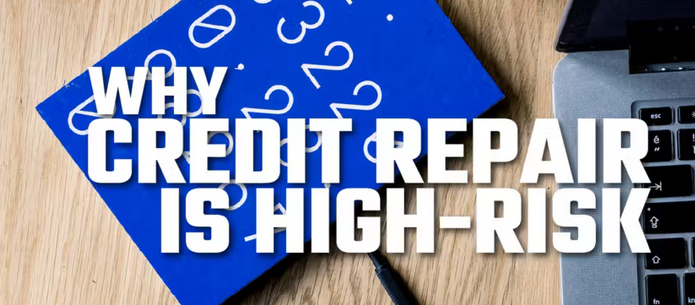Are high merchant fees eating into your hard-earned profits?
Merchant services fees can put the squeeze on businesses with thin profit margins. Even though you’d love to lower your merchant fees, you’re probably wondering what choice you have. After all, taking drastic measures like not accepting credit cards at all could cost you valuable sales and customers.
Yes, merchant fees are unavoidable—but that doesn’t mean they should be out of control. It is possible to reduce merchant fees without shooting yourself in the foot.
This guide will help you save money on merchant fees so you can focus on growing your revenue, reinvesting in your business, and scaling your operations. Follow these tips on how to reduce merchant fees without sacrificing revenue or losing customers.
How to Reduce Merchant Fees: 9 Practical Steps You Can Take
1. Avoid Long-Term Contracts
If you’re looking to reduce your long-term costs for payment processing, flexible contracts are the way to go. Not only does this give you a competitive edge by making it possible to change MSPs if a better offer becomes available, but it can also inspire your current MSP to step up their game to keep you as a customer. Furthermore, avoiding long-term contracts can also save you the high costs of early cancellation fees.
2. Choose the Pricing Model that’s Best for You
You should also look at the way your merchant services provider (MSP) charges for your merchant account transactions. There are three different pricing models available for merchant accounts: flat-rating pricing, tiered pricing, and interchange plus pricing.
It’s important to understand the differences and what each type has to offer so you can choose an MSP with a pricing model that makes the most sense for your business.

Flat-Rate Pricing
With flat-rate pricing, merchants know exactly how much they’ll be charged for almost every transaction. Processing rates are predetermined, which makes for easy budgeting and helps predict your cash flow.
However, this consistency comes at a cost: flat-rate pricing is typically more expensive than other pricing models. Since your provider needs to make sure their processing fees are covered no matter what, the margins are higher and you’ll often end up with a higher rate per transaction. This helps your provider account for changing interchange rates without losing money on high-rate transactions.
Tiered Pricing
Tiered pricing is a bit more complicated than the flat-rate model. Transactions are categorized into three different levels, each with its own price: qualified, mid-qualified, and non-qualified. Merchants pay fees based on which level (or tier) each transaction falls into. These rates are a combination of interchange rates set by the credit card associations along with the MSP’s processing fee.
- Qualified transactions receive the lowest possible rate (which means lower costs for you). This rate only applies to non-reward consumer credit and debit cards.
- Mid-qualified transactions, such as reward cards, receive the second lowest processing rate.
- Finally, non-qualified transactions are charged the highest processing rate. This level includes international credit cards, high-level rewards cards, and card-not-present transactions that don’t include the customer’s billing address.
Interchange Plus Pricing
If you’re looking for a simple and affordable merchant fee structure, interchange plus pricing offers the best of all worlds. Interchange rates are set by credit card associations. So, although MSPs don’t have any power to change these rates, they do set the processing fees that get charged on top of the interchange rate.
With interchange plus pricing, your transaction fees are influenced by fluctuations in the interchange rates. Unlike flat-rate pricing or tiered pricing, interchange plus pricing ensures that when interchange rates are low, your MSP passes those extra savings on to you.
3. Settle Transactions Within 24 Hours
In order to qualify for the best (i.e., lowest) interchange rate, transactions need to close within a specific time frame (typically 24 hours or less). The more efficiently you can settle your transactions, the lower your merchant fees will be.
Transactions that take over 24 hours are downgraded and subject to a higher rate (known as Electronic Interchange Reimbursement Fee or EIRF). Transactions that take longer than 36 hours are further downgraded to an even higher rate (called Domestic Sales Credit).
4. Negotiate Your Non-Processing Fees
While interchange rates are outside of your MSP’s control, any other fees associated with your merchant account can potentially be negotiated. This includes everything from rental costs for equipment to monthly maintenance fees.
One of the best negotiating tactics is to use your purchase volume as leverage. If you’re making tons of sales, your MSP knows that your business is a steady source of transaction-based revenue—which means you might be able to negotiate lower rates on other types of fees.
5. Optimize Transactions Types
Certain transaction types cost more to process than others. Generally speaking, debit card transactions have lower fees than credit card payments, EMV chip transactions are slightly less expensive than swiping, and swiped card transactions tend to have lower fees than manually entered card numbers.
You can make this work in your favor by incentivizing customers to use a specific payment method. That could mean setting slightly different prices for cash and card purchases or offering a small discount to customers who pay with debit instead of credit. Even a simple sign stating that you prefer one method over another can encourage customers to help you save on fees.
Additionally, you should ensure your payment processing hardware supports the most cost-effective methods of accepting payments. So, because chip transactions have lower costs than swipe transactions, you should make sure your terminal is capable of accepting chip payments.
6. Register for Chargeback Alerts
As you probably (unfortunately) already know, chargebacks are expensive. Not only are chargeback processing fees significantly higher than most transactions (often ranging from $20 to $100); but you also lose money from the sale, along with the cost of any merchandise you’ve already shipped.

Even worse, too many chargebacks can increase your risk of having your merchant account terminated—especially if you’re not partnered with a merchant services provider that specializes in supporting high-risk businesses.
So, if you’re wondering how to reduce merchant fees, signing up for chargeback alerts is one of the easiest things you can do. GetPayment’s chargeback alerts lower your costs by notifying you of any potential disputes before they turn into chargebacks. This allows you to address the issue with the customer directly before it escalates—and before you’re charged a high fee for the chargeback.
7. Send Contact Information for Card-Not-Present Transactions
When your customers receive a credit card statement, they should be able to tell which purchases were made from your store. If a customer can’t identify what a transaction is for or recall making the purchase, they’re more likely to claim fraud.
However, if you include your customer service contact information in the transaction details, your customers will see this information on their statement and be able to reach out if they have a concern about their purchase. This reduces chargebacks, which means more revenue for your business, and saves you the associated costs, which effectively reduces your merchant fees.
8. Use an Address Verification Service (AVS)
Another way to lower your merchant fees is to use an address verification system to verify the customer’s billing address. Using an AVS for online purchases not only provides extra security for your customers, but it also minimizes chargebacks by preventing credit card fraud in the first place.
Plus, most card providers will offer lower interchange rates for transactions that use AVS—which translates directly into cost-savings for your business.
9. Change Merchant Service Providers
You’re not married to your merchant services provider. If they’re not providing the services you need at a fair rate, it’s time to shop around for a better option.
With GetPayment as your payments partner, you’ll never have to worry about hidden fees or unexplained costs. We’ll help you secure the right merchant services to save on fees, minimize chargebacks, and grow your business.
To learn more about how we can protect your business from high fees, account freezes, and chargebacks, contact GetPayment today.





One Response
Multiple new unexplained, unnecessary merchant service charges for Elavon. Please provide new quote for bottom line pricing. Will be changing merchant service providers.